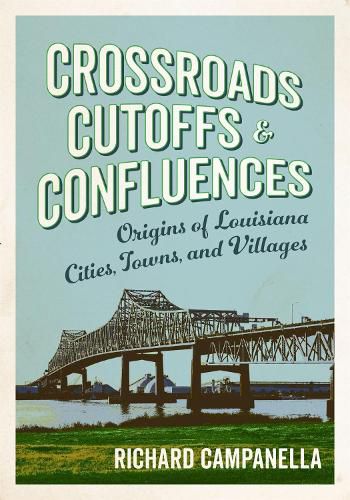Readings Newsletter
Become a Readings Member to make your shopping experience even easier.
Sign in or sign up for free!
You’re not far away from qualifying for FREE standard shipping within Australia
You’ve qualified for FREE standard shipping within Australia
The cart is loading…






Richard Campanella's Crossroads, Cutoffs, and Confluences tells the epic story of human settlement in Louisiana, unearthing the original geographical rationales for the formation of hundreds of cities, towns, and villages where most Louisianians live now. Campanella illuminates why these communities formed where they did, be they at river confluences, forks, crossroads, heads of navigation, ferry landings, shortcuts, portages, resource-extraction sites, or railroad stations, and explores other spatial factors that initially attracted settlers.
Many of these raisons d'etre have faded into the past. People no longer settle in Alexandria, for example, on account of the Red River rapids; nor do they reside in Breaux Bridge because of Breaux's footbridge over Bayou Teche, or in Cut Off because its canal cut off days of arduous travel. Nevertheless, residents of those communities can trace every movement of their lives to those forgotten reckonings, made at a time when history cast those geographies as critical to the comings and goings of their forebears.
Readers curious about the origins of Louisiana's cities, towns, and villages can turn to Crossroads, Cutoffs, and Confluences for answers to that most fundamental question of human geography: Why are we here?
$9.00 standard shipping within Australia
FREE standard shipping within Australia for orders over $100.00
Express & International shipping calculated at checkout
Richard Campanella's Crossroads, Cutoffs, and Confluences tells the epic story of human settlement in Louisiana, unearthing the original geographical rationales for the formation of hundreds of cities, towns, and villages where most Louisianians live now. Campanella illuminates why these communities formed where they did, be they at river confluences, forks, crossroads, heads of navigation, ferry landings, shortcuts, portages, resource-extraction sites, or railroad stations, and explores other spatial factors that initially attracted settlers.
Many of these raisons d'etre have faded into the past. People no longer settle in Alexandria, for example, on account of the Red River rapids; nor do they reside in Breaux Bridge because of Breaux's footbridge over Bayou Teche, or in Cut Off because its canal cut off days of arduous travel. Nevertheless, residents of those communities can trace every movement of their lives to those forgotten reckonings, made at a time when history cast those geographies as critical to the comings and goings of their forebears.
Readers curious about the origins of Louisiana's cities, towns, and villages can turn to Crossroads, Cutoffs, and Confluences for answers to that most fundamental question of human geography: Why are we here?